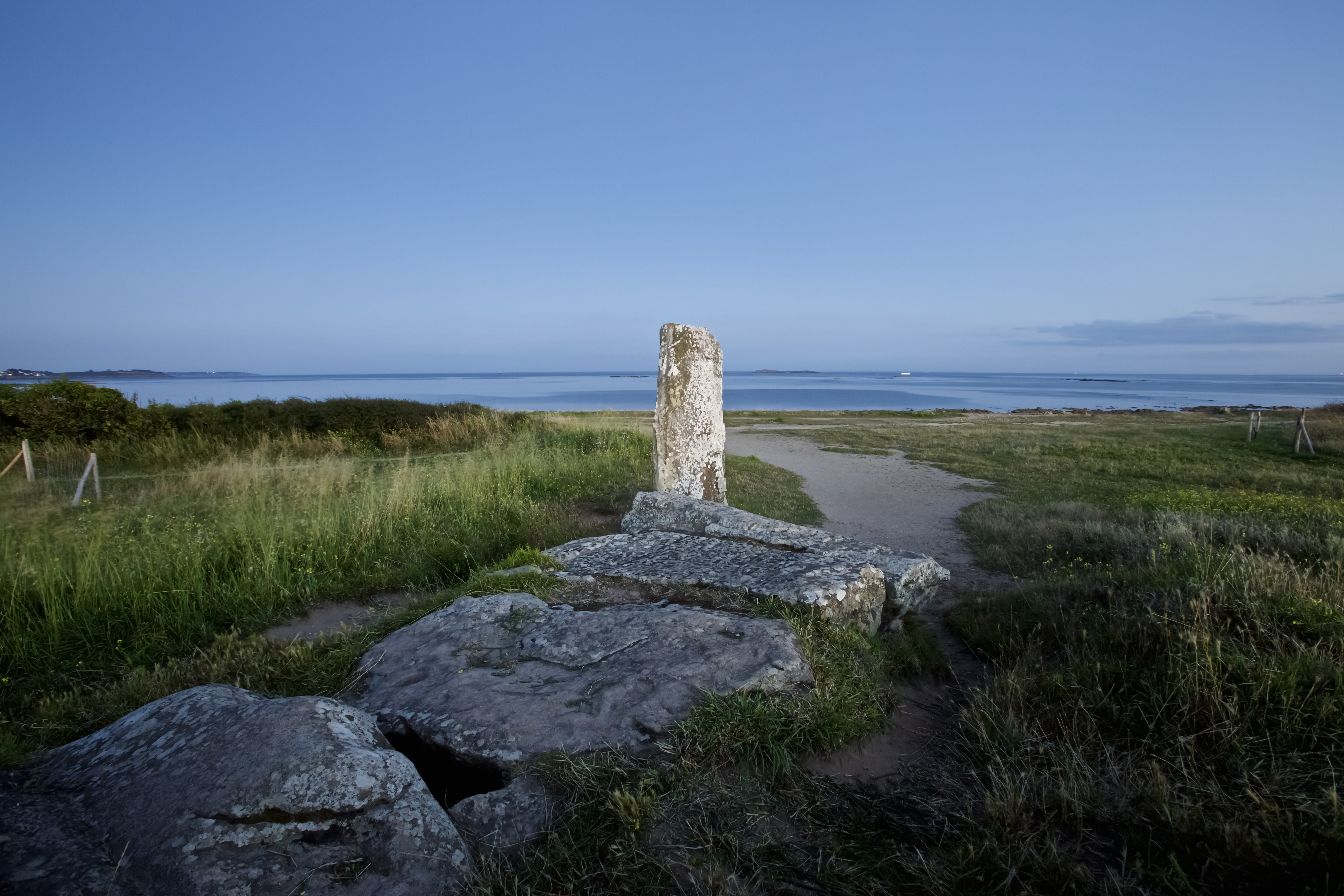Overlooking the main beach at Locmariaquer to the west, the Flat Stone Dolmen is the property of the French State. It was listed as a Historic Monument as early as 1882, and is now located in land belonging to the Coastal Conservatory.
Access to the inside of the monument is barred by a rope to protect the structure; it is gradually being damaged due to exposure to sea winds and the constant humidity inside.
In 1813, a Mr Renaud (from an Auray company formed to exploit the gold from the dolmens that had previously excavated the Table des Marchands in 1811) explored and emptied the dolmen, uncovering a series of outstanding engravings on the walls. The excavations were reported by Count Maudet de Penhouët the following year. Since then, a large number of research scientists have examined the artwork in an attempt to gain a better understanding of the meaning of Neolithic engravings. The work done by Mr Serge Cassen in recent years has enabled progress to be made in the understanding of these symbols.
The Flat Stone Dolmen has been known and written about since the early nineteenth century. It has been excavated and restored many times – including some unauthorised digs. The granite stones used in restoration works can be recognised on the passage ceiling by their modern drill grooves.



